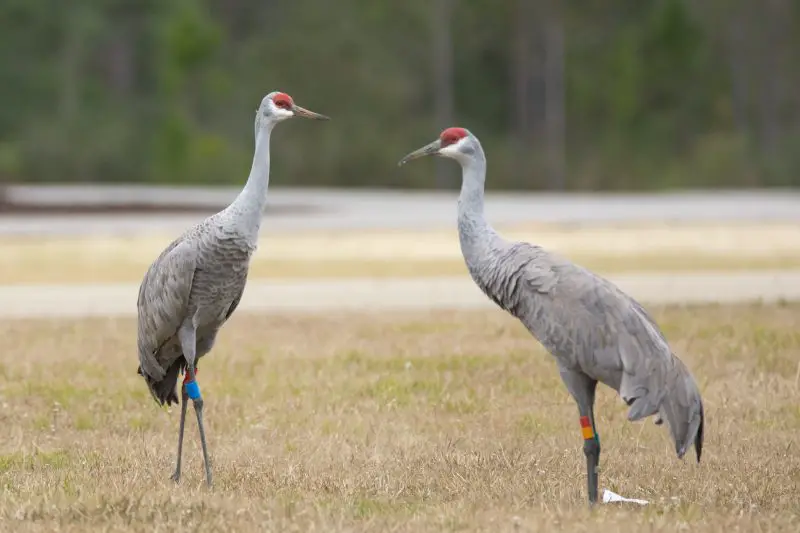Cranes in Wisconsin are fascinating and majestic birds that capture the attention of birdwatchers and nature enthusiasts alike. Despite their large size and striking presence, only two species of cranes are commonly found in the state. Understanding these cranes’ unique features and behaviors can enrich outdoor experiences and help identify them in the wild.
The two main cranes in Wisconsin are the Sandhill Crane and the Whooping Crane. Both species play important roles in the state’s ecosystems and migration patterns. Sandhill Cranes are more numerous and widely distributed, while Whooping Cranes are rare and endangered, making sightings a special event.
Learning about cranes in Wisconsin offers valuable insight into the state’s rich wildlife heritage. This guide provides clear pictures and identification tips to help recognize these impressive birds during visits to wetlands, marshes, and open fields across Wisconsin.
Common Types of Cranes in Wisconsin
Sandhill Crane (Antigone canadensis)

The Sandhill Crane is a tall and elegant bird, easily recognized by its overall gray plumage, long legs, and neck. One of its most distinctive features is the bright red patch of skin on its crown, which contrasts strikingly with the white cheeks. These cranes can stand about 3 to 4 feet tall, with a wingspan reaching up to 6 to 7 feet. Their slender bodies and long necks give them a graceful appearance whether standing still or in flight.
In Wisconsin, Sandhill Cranes are commonly found in wetlands, marshes, open fields, and grasslands. They favor shallow wetlands for nesting and feeding but also venture into agricultural fields during migration or wintering seasons. Their deep booming calls are a familiar sound in these habitats, often heard at dawn and dusk. The birds use a variety of vocalizations and a complex set of dances involving bowing, jumping, and wing flapping as part of their social and mating behaviors.
Sandhill Cranes were once near extinction in Wisconsin due to habitat loss and hunting but have made a remarkable comeback thanks to conservation efforts and legal protections. Their population has steadily increased, and they are now a common sight during migration seasons. These cranes typically migrate south for the winter, traveling to warmer areas such as Texas and Florida before returning to Wisconsin in the spring to breed.
A fun fact about Sandhill Cranes is that they mate for life, often returning to the same nesting territories year after year. Their courtship dances, which include leaps, wing flaps, and synchronized movements, are not only a display of bonding but also a delight to watch for bird enthusiasts. Their ability to adapt to various habitats and their successful conservation story make them a symbol of wildlife resilience in Wisconsin.
Whooping Crane (Grus americana)

The Whooping Crane is one of the most iconic and endangered birds in North America. It is easily identified by its large size, striking white plumage, and distinctive black wingtips visible during flight. Its face features a bare red crown and a black “mustache” pattern that frames its beak, giving it a unique appearance. Whooping Cranes stand around 5 feet tall, with a wingspan that can reach up to 7.5 feet, making them one of the tallest birds in Wisconsin.
Whooping Cranes do not breed in Wisconsin but migrate through the state during their long annual journeys between breeding grounds in remote parts of Canada and wintering sites in the southern United States, primarily in Texas. Their preferred habitat includes large wetlands, marshes, and shallow lakes, where they find food and rest during migration. Due to their rarity, spotting a Whooping Crane in Wisconsin is a special event for bird watchers.
This species is critically endangered, with only a few hundred individuals in the wild. Decades ago, their numbers dwindled to fewer than 20 birds, but ongoing conservation programs, captive breeding, and habitat restoration have helped their numbers increase. Despite this progress, Whooping Cranes remain vulnerable, making protection efforts crucial, especially along their migration corridors such as Wisconsin.
A remarkable fact about Whooping Cranes is their long lifespan and strong pair bonds. They often mate for life, and their elaborate courtship dances are similar to those of Sandhill Cranes but even more dramatic. Their calls can carry for miles across wetlands, earning them their “whooping” name. Conservationists continue to monitor and protect these majestic birds to ensure that future generations can witness their graceful presence in states like Wisconsin.
Best Places to See Cranes in Wisconsin
Wisconsin offers several excellent locations where bird watchers and nature lovers can spot Sandhill Cranes, especially during migration and breeding seasons. One of the most popular areas is the Horicon Marsh, the largest freshwater cattail marsh in the United States. This vast wetland provides ideal habitat with shallow waters and open fields, attracting thousands of Sandhill Cranes every year. Visitors can enjoy viewing platforms and trails that offer great crane-watching opportunities, particularly in spring and fall.
Another key location is the Central Sands Region, which includes areas around Poynette and Portage. This region features a mix of wetlands, grasslands, and agricultural fields where Sandhill Cranes feed and roost. The cranes often gather here in large numbers before continuing their migration southward. Early mornings and evenings during migration seasons are the best times to witness their impressive flocks and hear their distinctive calls.
For spotting Whooping Cranes, it’s more challenging because they are rare and migratory. However, Lower Wisconsin State Riverway and the wetlands around Chequamegon-Nicolet National Forest sometimes serve as stopover points during migration. These areas provide quiet, undisturbed wetland habitats essential for resting and feeding. Bird watchers should visit with patience and respect, as these cranes are sensitive to disturbance.
Overall, spring and fall migration seasons—from late March through April and September through October—offer the best chances to observe both Sandhill and Whooping Cranes in Wisconsin. Joining local birding groups or guided tours can enhance the experience by providing expert knowledge and access to prime viewing spots.






